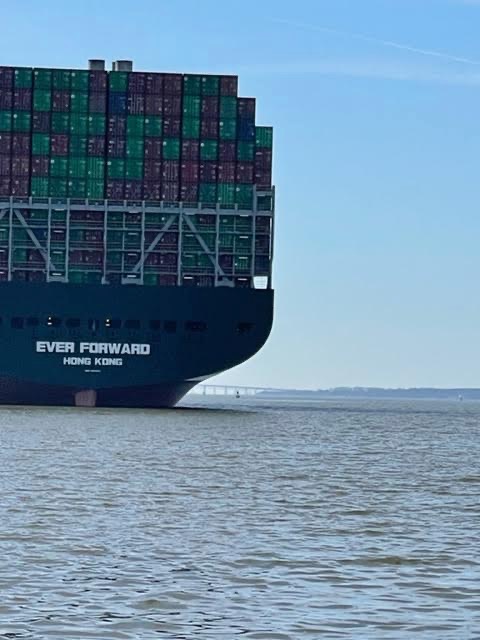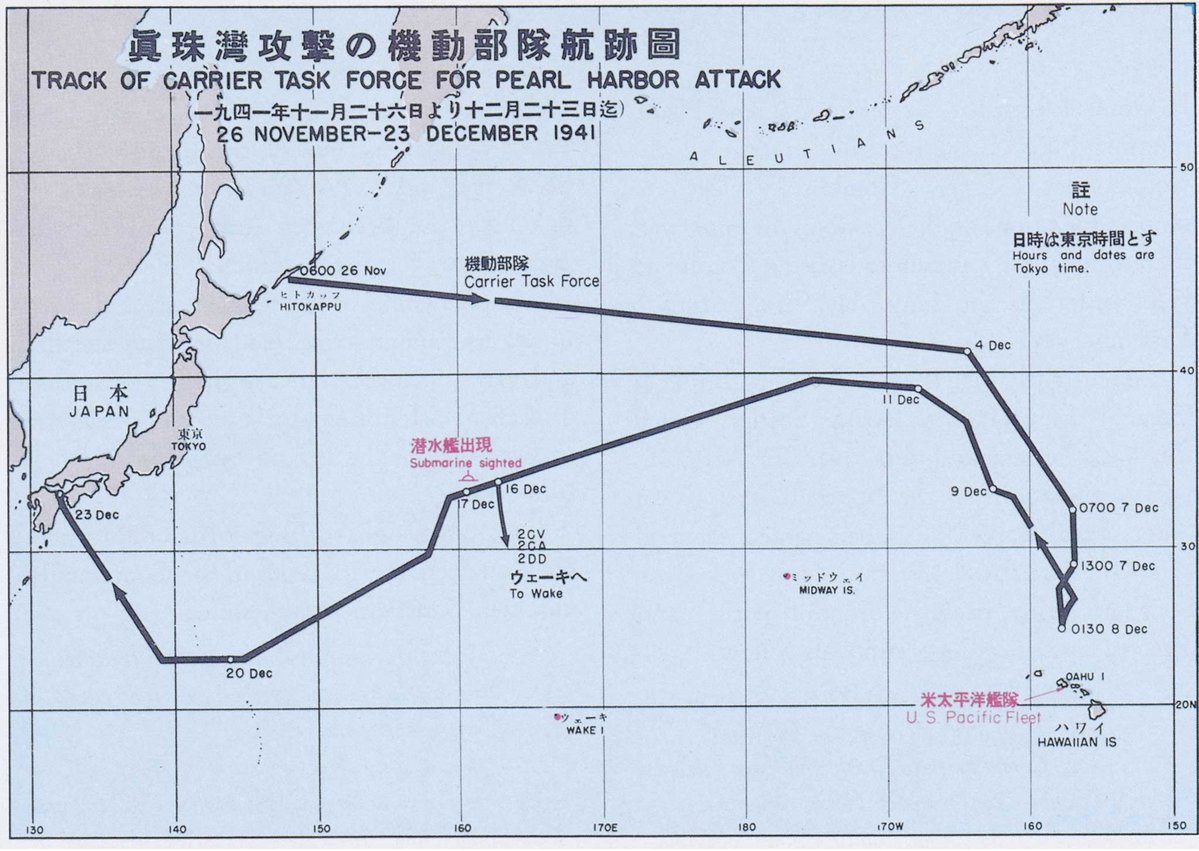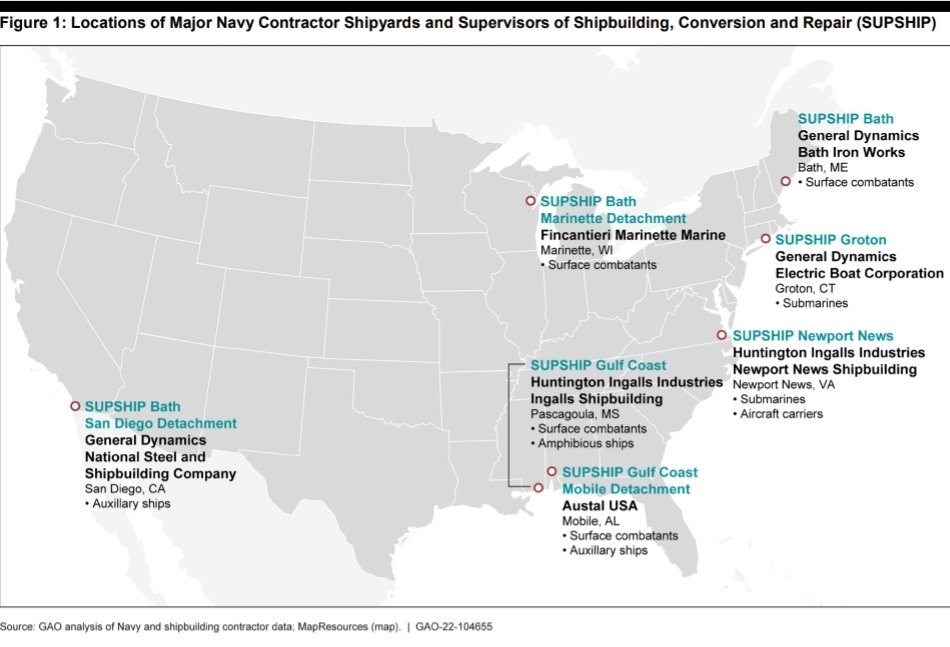1/Some photos from today of #EverForward. A view of her shows her bow is almost 4 meters (13 feet) out of the water. She is 17 to 24 feet of water and draws 42 feet.
This is is going to be a prolonged salvage to get her off.



This is is going to be a prolonged salvage to get her off.




2/She missed her southbound turn (unknown why) and went out of Craighill Channel - dredged from 38 to 50 feet to accommodate neo-Panamax ships like #EverForward.
She departed the channel between red buoys 16 & 14 and plowed into the spoil area from the dredging; about 24 ft.


She departed the channel between red buoys 16 & 14 and plowed into the spoil area from the dredging; about 24 ft.



3/Unlike her larger cousin #EverGiven (400m in length and 20,000 TEUs), which grounded at her bow and stern in the Suez last year, #EverForward (334m & 12,000 TEUs) is aground from bow to stern as demonstrated by her exposed bottom fore and aft. 







4/Many are asking how this could happen, and it will come down to either mechanical or human errors?
What we should ask is how everyday, ships this size typically transit the world's oceans and ports with no issues.
As I post this #EverGiven is preparing to transit the #Suez.

What we should ask is how everyday, ships this size typically transit the world's oceans and ports with no issues.
As I post this #EverGiven is preparing to transit the #Suez.


5/Fortunately, #EverForward did not block the channel to @portofbalt. She did not do this coming over the tunnel into Thimble Shoals and seal off Chesapeake Bay, or the southern passage to the naval base at Norfolk, or San Diego or LA/Long Beach and cut off our trade or Navy. 







6/ Unfortunately, the only time we pay attention to shipping is when we have disasters or tragedy. Their is a movie for Titanic, but not for her sistership Olympic.
Throughout the pandemic, ocean shipping never stopped. #EVERFORWARD is a reminder of that oceanic #supplychain.
Throughout the pandemic, ocean shipping never stopped. #EVERFORWARD is a reminder of that oceanic #supplychain.
7/Great video by @jsrailton on the voyage of #EverForward.
The only thing I would add is note how tight the fit is for the ship in the dredged channel (the white area).
Even coming off the dock it is close, with little margin for error.
The only thing I would add is note how tight the fit is for the ship in the dredged channel (the white area).
Even coming off the dock it is close, with little margin for error.
8/In case you missed my full video on the event, here it is:
MV Ever Forward Runs Aground in Chesapeake Bay - 14 March 2022 | What's Going on With Shipping?
MV Ever Forward Runs Aground in Chesapeake Bay - 14 March 2022 | What's Going on With Shipping?
9/I also talked it about on this week's WHAT THE SHIP?
It was story #2.
What the Ship? Ukraine Russia War, Ever Forward;,COVID in China, US Port Backlogs & Jones Act Ships
It was story #2.
What the Ship? Ukraine Russia War, Ever Forward;,COVID in China, US Port Backlogs & Jones Act Ships
• • •
Missing some Tweet in this thread? You can try to
force a refresh






















